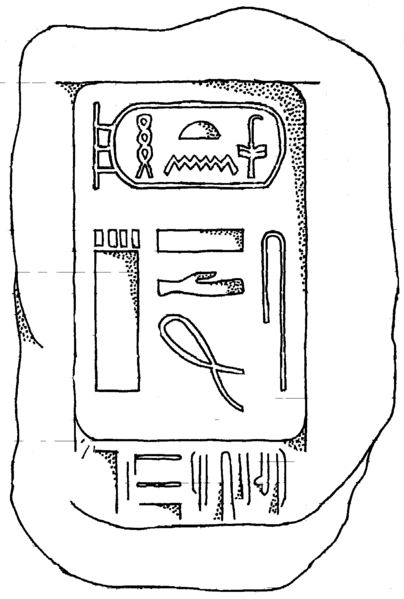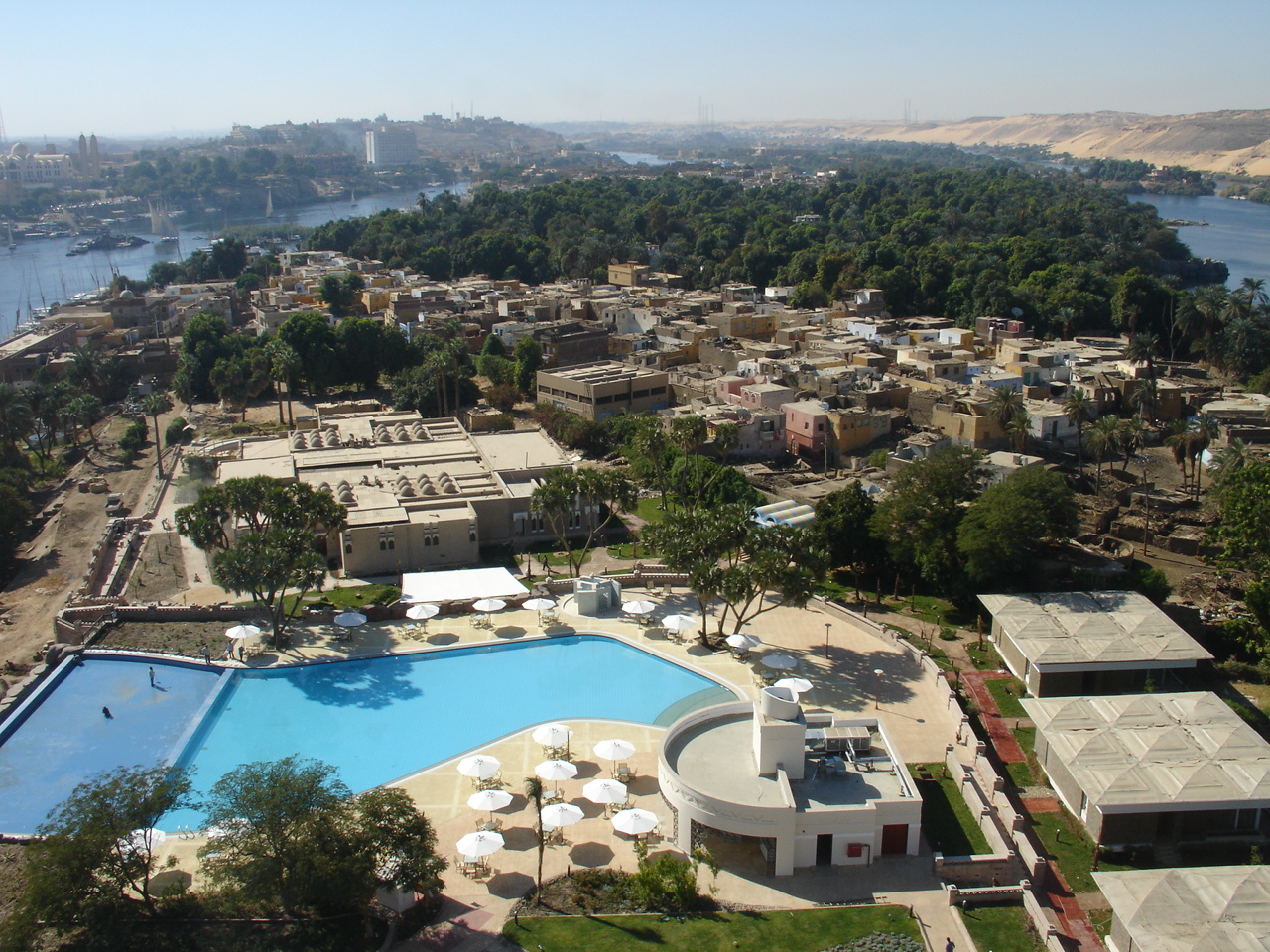|
Djefatnebti
Djefatnebti (also Djefatnebty) was an ancient Egyptian queen consort. She lived at the end of the Third Dynasty of Egypt, 3rd Dynasty and may have been a wife of the last king of that dynasty, Huni.Francesco RaffaeleRoyal Women (queens, princesses) in early Egypt (Dynasty 0–3)/ref> Identity Djefatnebti’s name appears in one single, black ink inscription on an earthen beer jar, which was excavated at the eastern corner of Elephantine. Altogether three inscriptions were found. The first one mentions the "year of the followers of Horus" and the foundation of a building which name is lost due to damage. The second one mentions the "year of the 2nd time of the followers of Horus" and an "11th time of counting-the-fields at Heliopolis (Ancient Egypt), Heliopolis". The third one contains the notation "The king of Upper- and Lower Egypt appears", a "3rd time of battling the robbers" and the death of Djefatnebti. Since the "counting of the fields" was performed as a tax collection ever ... [...More Info...] [...Related Items...] OR: [Wikipedia] [Google] [Baidu] |
Huni
Huni (original reading unknown) was an ancient Egyptian king and the last pharaoh of the Third Dynasty of Egypt during the Old Kingdom period. Following the Turin king list, he is commonly credited with a reign of 24 years, ending c. 2613 BC. Huni's chronological position as the last king of the third dynasty is seen as fairly certain, but there is still some uncertainty on the succession order of rulers at the end of the 3rd dynasty. It is also unclear under which Hellenized name the ancient historian Manetho could have listed him in his historical writing ''Aegyptiacae''. Most possibly he is to be identified with the Hellenized name Aches, as Winfried Barta proposes. Many Egyptologists believe that Huni was the father and direct predecessor of king Sneferu, but this is questioned by other scholars. Huni is seen by scholars as a confusing figure in Egyptian history, because he was long remembered in Egyptian traditions, but very few documents, objects or monuments f ... [...More Info...] [...Related Items...] OR: [Wikipedia] [Google] [Baidu] |
Third Dynasty Of Egypt
The Third Dynasty of ancient Egypt (Dynasty III) is the first dynasty of the Old Kingdom. Other dynasties of the Old Kingdom include the Fourth, Fifth and Sixth. The capital during the period of the Old Kingdom was at Memphis. Overview After the turbulent last years of the Second Dynasty, which might have included civil war, Egypt came under the rule of Djoser, marking the beginning of the Third Dynasty.Dodson, Hilton, ''The Complete Royal Families of Ancient Egypt'', 2004 Both the Turin King List and the Abydos King List record five kings,Toby A.H. Wilkinson, ''Early Dynastic Egypt'', Routledge, 2001 while the Saqqara Tablet only records four, and Manetho records nine,Aidan Dodson: ''The Layer Pyramid of Zawiyet el-Aryan: Its Layout and Context.'' In: ''Journal of the American Research Center in Egypt (JARCE)'', No. 37 (2000). American Research Center (Hg.), Eisenbrauns, Winona Lake/Bristol 2000, , pp. 81–90. many of whom did not exist or are simply the same king unde ... [...More Info...] [...Related Items...] OR: [Wikipedia] [Google] [Baidu] |
Elephantine
Elephantine ( ; ; arz, جزيرة الفنتين; el, Ἐλεφαντίνη ''Elephantíne''; , ) is an island on the Nile, forming part of the city of Aswan in Upper Egypt. The archaeological sites on the island were inscribed on the UNESCO World Heritage List in 1979 along with other examples of Upper Egyptian architecture, as part of the " Nubian Monuments from Abu Simbel to Philae" (despite Elephantine being neither Nubian, nor between Abu Simbel and Philae). Geography Elephantine is from north to south, and is across at its widest point. The layout of this and other nearby islands in Aswan can be seen from west bank hillsides along the Nile. The island is located just downstream of the First Cataract, at the southern border of Upper Egypt with Lower Nubia. This region above is referred to as Upper Egypt because it is further up the Nile. The island may have received its name after its shape, which in aerial views is similar to that of an elephant tusk, or from the rou ... [...More Info...] [...Related Items...] OR: [Wikipedia] [Google] [Baidu] |
Horus
Horus or Heru, Hor, Har in Ancient Egyptian, is one of the most significant ancient Egyptian deities who served many functions, most notably as god of kingship and the sky. He was worshipped from at least the late prehistoric Egypt until the Ptolemaic Kingdom and Roman Egypt. Different forms of Horus are recorded in history, and these are treated as distinct gods by Egyptologists."The Oxford Guide: Essential Guide to Egyptian Mythology", Edited by Donald B. Redford, Horus: by Edmund S. Meltzer, pp. 164–168, Berkley, 2003, . These various forms may be different manifestations of the same multi-layered deity in which certain attributes or syncretic relationships are emphasized, not necessarily in opposition but complementary to one another, consistent with how the Ancient Egyptians viewed the multiple facets of reality. He was most often depicted as a falcon, most likely a lanner falcon or peregrine falcon, or as a man with a falcon head. The earliest recorded form of Ho ... [...More Info...] [...Related Items...] OR: [Wikipedia] [Google] [Baidu] |
Heliopolis (Ancient Egypt)
Heliopolis (I͗wnw, Iunu or 𓉺𓏌𓊖; egy, I͗wnw, 'the Pillars'; cop, ⲱⲛ; gr, Ἡλιούπολις, Hēlioúpοlis, City of the Sun) was a major city of ancient Egypt. It was the capital of the 13th or Heliopolite Nome of Lower Egypt and a major religious centre. It is now located in Ayn Shams, a northeastern suburb of Cairo. Heliopolis was one of the oldest cities of ancient Egypt, occupied since the Predynastic Period.. It greatly expanded under the Old and Middle Kingdoms but is today mostly destroyed, its temples and other buildings having been scavenged for the construction of medieval Cairo. Most information about the ancient city comes from surviving records. The major surviving remnant of Heliopolis is the obelisk of the Temple of Ra-Atum erected by Senusret I of Dynasty XII. It still stands in its original position, now within Al-Masalla in Al-Matariyyah, Cairo. The high red granite obelisk weighs 120 tons (240,000 lbs) and is believed to be the ... [...More Info...] [...Related Items...] OR: [Wikipedia] [Google] [Baidu] |
Tax Collection
A revenue service, revenue agency or taxation authority is a government agency responsible for the intake of government revenue, including taxes and sometimes non-tax revenue. Depending on the jurisdiction, revenue services may be charged with tax collection, investigation of tax evasion, or carrying out audits. In certain instances, they also administer payments to certain relevant individuals (such as statutory sick pay, statutory maternity pay) as well as targeted financial support (welfare) to families and individuals (through payment of tax credits or transfer payments). The chief executive of the revenue agency is usually styled as Commissioner, Minister, Secretary or Director. Revenue services by jurisdiction }, AFIP) , — , - , , State Revenue Committee of Armenia ( hy, Պետական Եկամուտների Կոմիտե (ՊԵԿ)) , — , - , , Australian Taxation Office (ATO) , — , - , , National Board of Revenue , — , - , , Barbados Revenue Authoritybr>, � ... [...More Info...] [...Related Items...] OR: [Wikipedia] [Google] [Baidu] |
Günter Dreyer
Günter Dreyer (5 October 1943 – 12 March 2019) was an Egyptologist at the German Archaeological Institute. In southern Egypt, Dreyer discovered records of linen and oil deliveries which have been carbon-dated to between 3300 BCE and 3200 BCE, predating the Dynastic Period. He originally worked as a chemical laboratory assistant. He studied Egyptology, Assyriology, and ancient Near Eastern Archeology at the University of Hamburg (1969-1971) and Free University of Berlin (1971-1978). During his studies, he took part in excavations in Kamid al lawz in Lebanon, the Mortuary Temple of Seti I in Qurna, and on Elephantine. In 1978 he received his doctorate with a thesis on temple dedications from the early period and the Old Kingdom(Der Tempel der Satet 1. Die Funde der Frühzeit und des Alten Reiches). Between 1978 and 1987, Dreyer was a consultant in the Cairo department of the DAI and took part in excavations on Elephantine, in Wadi Garawi, and in Abydos . In 1987 he recei ... [...More Info...] [...Related Items...] OR: [Wikipedia] [Google] [Baidu] |
27th-century BC Women
The 7th century is the period from 601 ( DCI) through 700 ( DCC) in accordance with the Julian calendar in the Common Era. The spread of Islam and the Muslim conquests began with the unification of Arabia by Muhammad starting in 622. After Muhammad's death in 632, Islam expanded beyond the Arabian Peninsula under the Rashidun Caliphate (632–661) and the Umayyad Caliphate (661–750). The Muslim conquest of Persia in the 7th century led to the downfall of the Sasanian Empire. Also conquered during the 7th century were Syria, Palestine, Armenia, Egypt, and North Africa. The Byzantine Empire suffered setbacks during the rapid expansion of the Caliphate, a mass incursion of Slavs in the Balkans which reduced its territorial limits. The decisive victory at the Siege of Constantinople in the 670s led the empire to retain Asia Minor which assured the existence of the empire. In the Iberian Peninsula, the 7th century was known as the ''Siglo de Concilios'' (century of councils) ... [...More Info...] [...Related Items...] OR: [Wikipedia] [Google] [Baidu] |




